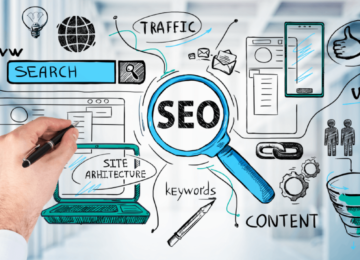The past two decades have witnessed the data provider’s position change dramatically. From mere information vendors with static datasets, the role has grown to include entrepreneurial partners with predictive intelligence in real-time. The industry has grown up with its speed of technological advancement, regulatory environment shifts, and business requirements’ expansion. Knowledge of the same is critical to those businesses banking on accurate, on-time, and actionable information for competitive advantage.
-
Evolution from Static Datasets to Dynamic Intelligence
Early leaders in the space largely handled precompiled data that was already outdated by the time it was delivered to customers. The method was good for its day but started to reveal its drawbacks as markets changed in an increasingly swift, complicated manner. The firm now handles dynamic, real-time-updated streams of information with close to real-time decision support.
- Continual data refresh: Modern providers use automated data pipelines to ensure the validity and freshness of their data.
- Custom delivery channels: Data is being made available increasingly through APIs, dashboards, and real-time integration with analysis tools.
- Real-time scalability: Cloud architecture enables providers to process and deliver huge datasets without the constraints of traditional delivery mechanisms.
These shifts from traditional static to dynamic data have revolutionized the strategic planning utilization of information in business.
-
Integration of Artificial Intelligence and Machine Learning
Artificial intelligence (AI) and machine learning (ML) are today part of the operations of large data providers. With these technologies, the providers are able to deliver more insight and identify patterns that are not visible to the human eye.
- Predictive analytics: AI algorithms forecast trends and outcomes, enabling decisions in advance.
- Automated cleansing: Machine learning algorithms detect and fix anomalities at scale, improving data quality.
- Behavioral segmentation: Advanced analytics divide audiences along complex behavioral patterns rather than demographic breadcrumbs.
AI-powered solutions have elevated data from an after-the-fact record to a forward-looking strategic tool.
-
Greater Emphasis on Data Privacy and Compliance
Regulations such as GDPR, CCPA, and other territorial privacy regulations have altered the landscape. Data providers are not only required to supply high-quality data sets but must also make certain that their procurement and handling processes meet stringent compliance standards.
- Transparent sourcing: Sources of data and consent practices are disclosed by suppliers to assure clients of lawful use.
- Built-in compliance frameworks: Compliance is integrated into data gathering, storage, and dissemination processes.
- Global flexibility: Providers serving global clients have to navigate simultaneous, sometimes competing regulatory regimes.
Compliance emphasis has complicated operations but strengthened the reputations of good providers.
-
Expansion into Real-Time and Event-Based Data
Speed imperative has placed real-time and event-based data at center stage. Financial institutions, e-commerce providers, logistics companies, and ad agencies require real-time feeds for making key mission decisions.
- Event-driven feeds: Vendors supply notifications triggered by market activity, customer activity, or operational anomalies.
- Streaming analytics: Real-time processing allows firms to act in a timely fashion.
- Latency reduction: Infrastructure investment reduces latency between data generation and delivery.
These capabilities transform data into a real-time operating asset rather than a stale point of reference.
-
Industry-Specific Specialization Grows
Whereas early data vendors would sell to broad markets, today’s innovators target a specific industry such as healthcare, retailing, financial services, or supply chain management.
- Industry knowledge: Specialization allows one to gain a better insight into industry-specific challenges and metrics.
- Customized datasets: Providers customize data gathering procedures to meet the unique needs of target industries.
- Regulatory fit: Specialization allows the vendors to cater to specialty compliance requirements, especially in heavily regulated industries.
Specialization has led to the emergence of higher accuracy, applicability, and consistency of the datasets available.
-
Levelling Big Data and Cloud Infrastructure
Big data technology and cloud computing innovation have revolutionized scalability and availability for data vendors.
- Massive storage space: Cloud infrastructure supports large, unstructured data sets.
- Global delivery: Providers can service customers worldwide without geographical limitations.
- Cost economies: On-demand processing and storage reduce operational costs while enabling advanced analytics.
This technological underpinning has made it possible for heterogeneous data sources to be consolidated into homogenous, actionable information.
-
Changes in Data Visualization and Reporting
Data providers nowadays understand that raw data is not very useful. Visualization tools and user-defined reporting formats take the center stage in the customer experience.
Interactive Dashboards: Businesses can explore data relationships with no need for deep technical skills.
- Customized Reporting: Suppliers offer reports tailored to specific business needs, from supply chain management to marketing.
- Mobile access: Data access through mobile channels ensures that decision-makers take action in a timely manner, wherever they may be.
New delivery formats have raised data consumption to a corporate skill from a specialized activity.
-
Collaboration and Strategic Partnerships
The vendor’s role has expanded from transactional delivery to strategic partnership with customers.
- Co-creation of data sets: Suppliers work with customers to determine new places of data and methods of data collection.
- Joint innovation programs: Collaborations give rise to emerging analytics trends and business models.
- Long-term integration: Suppliers embed their services into customer processes for long-term value creation.
By developing into strategic partners, suppliers enhance the level of contribution to customer success.
Looking Ahead: Emerging Trends and Opportunities future step in the evolution of data providers will be influenced by greater automation, greater interoperability, and the establishment of decentralized data marketplaces.
Blockchain integration: Secure, transparent data transactions with trust assurance may become the standard for trust verification.
Cross-industry data sharing: Ecosystems in partnership may be able to reveal new insights by combining datasets across industries.
Edge computing: Edge processing will reduce latency for those applications where timing truly makes a difference.
These advances have the potential to make data even more timely, reliable, and actionable.
Data providers are no longer simply sellers of data; they are sophisticated, tech-savvy partners that can help drive strategic business transformation. By integrating AI, real-time capability, compliance thought leadership, and industry expertise, the industry is continuing to evolve to accommodate a data-driven economy. Those companies that know this transformation is underway will be more likely to choose vendors that don’t just provide data but also unleash their full potential.











